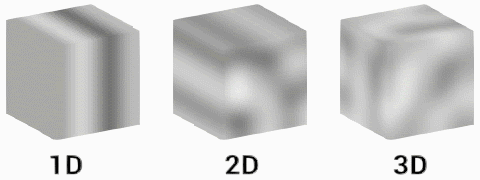forked from BilalY/Rasagar
3.1 KiB
3.1 KiB
Perlin Noise
Menu Path : Operator > Noise > Perlin Noise
The Perlin Noise Operator allows you to specify coordinates to sample a noise value within a specified range in one, two, or three dimensions. Perlin noise is a type of gradient noise which has a good distribution of values which makes it rarer to have similar adjacent values.
You can use this Operator to introduce variety to your particle attributes. A common use case is to use each particle’s position as a coordinate to sample the noise to output a new color, velocity, or position value.
Operator settings
| Property | Type | Description |
|---|---|---|
| Dimensions | Enum | Specify whether the noise is one, two, or three dimensional. |
| Type | Enum | Specify what type of noise to use. |
Operator properties
| Output | Type | Description |
|---|---|---|
| Noise | Float | The noise value at the coordinate you specify. |
| Derivatives | Float Vector2 Vector3 |
The rate of change of the noise for every dimension. The Type changes to match the number of Dimensions. |






